Abstract
Single unit activity in spindle afferent nerve fibres from the finger flexors, the anterior tibial muscle, and the calf muscles was recorded intraneurally with tungsten microelectrodes in patients with Parkinsonism with resting tremor and in spastic patients with clonus. During tremor of Parkinsonism, involving the receptor bearing muscles, the Ia afferent fibre discharge patterns were similar to those seen previously in healthy subjects during voluntary fast alternating finger or foot movements: besides the stretch discharges occurring during the relaxation phases, discharges also occurred during the contraction phases. Such contraction discharges, presumed to originate from intrafusal muscle fibre contractions, were not seen in the spastic patients during clonus. During the clonic oscillations each afferent stretch discharge was regularly followed by a stretch reflex contraction which on its falling phase elicited a new volley of impulses in the Ia afferent fibres. The findings are considered to support the notion that, like the contractions in normal voluntary alternating movements, the contractions in tremor of Parkinsonism are organized according to the principle of alpha-gamma coactivation, whereas the contractions in clonus are stretch reflexes causing pure alpha contractions.
Full text
PDF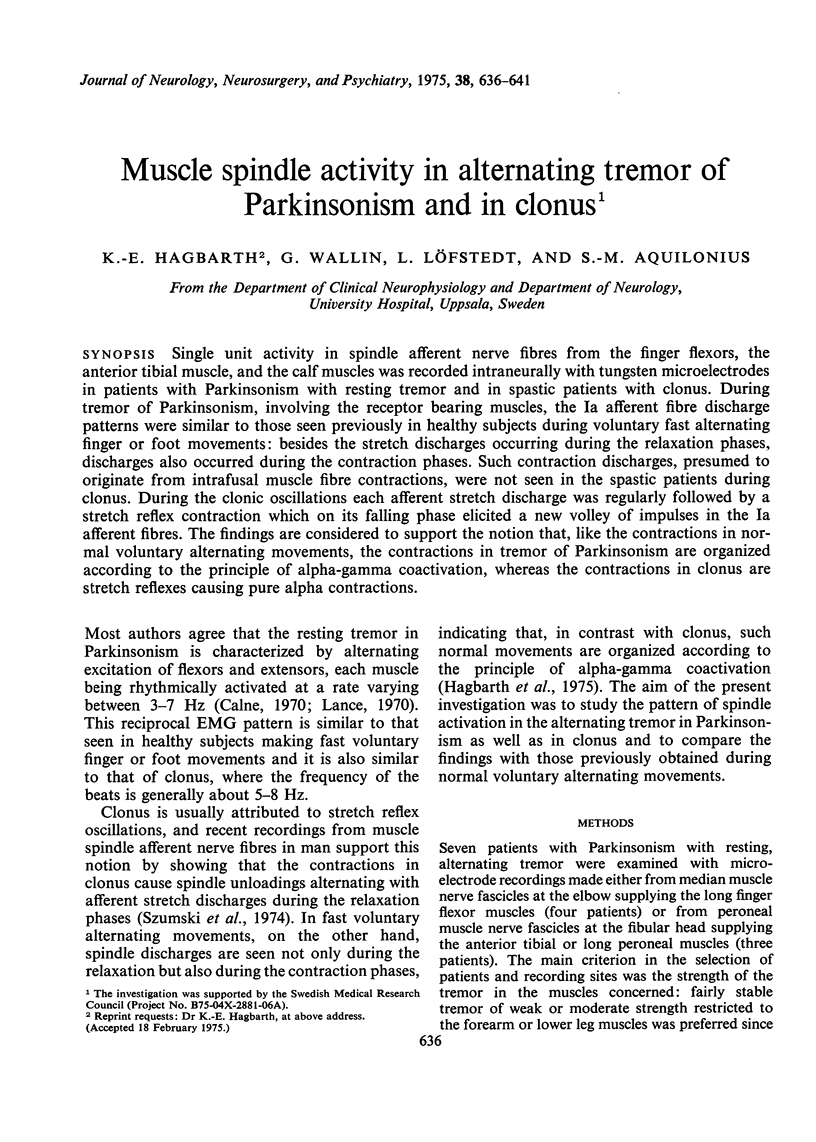
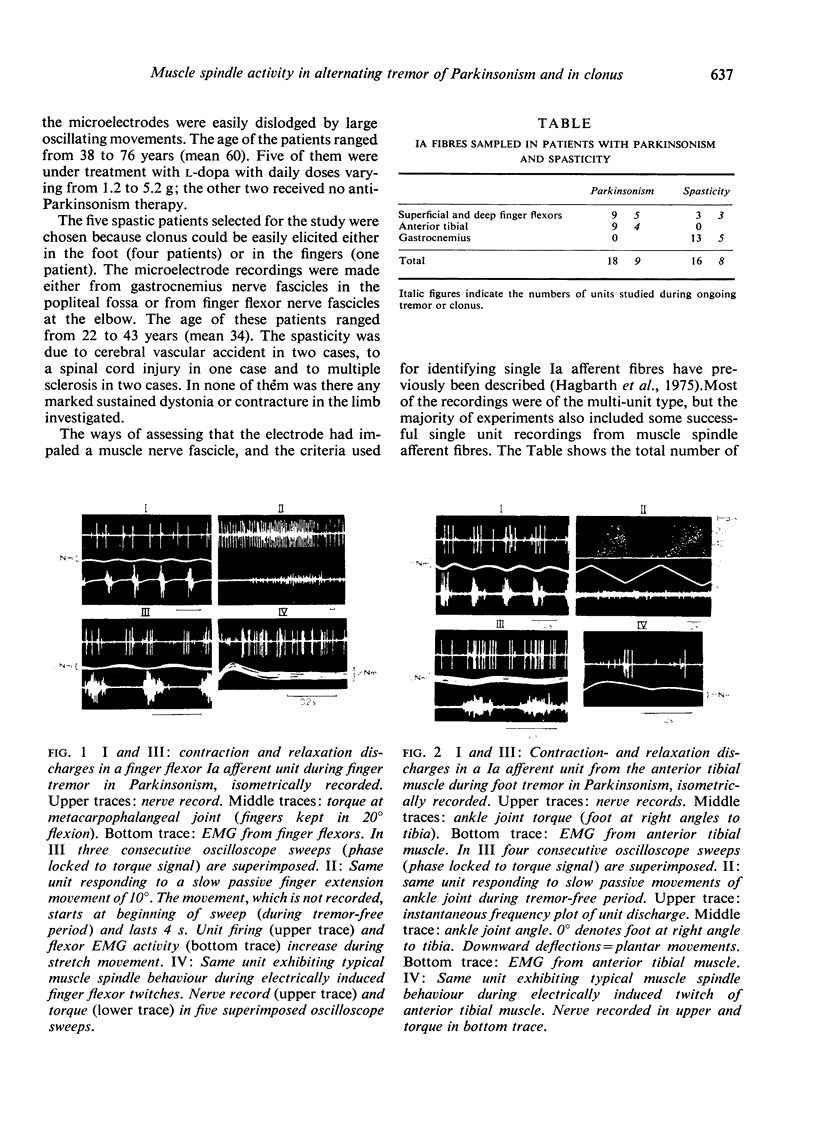
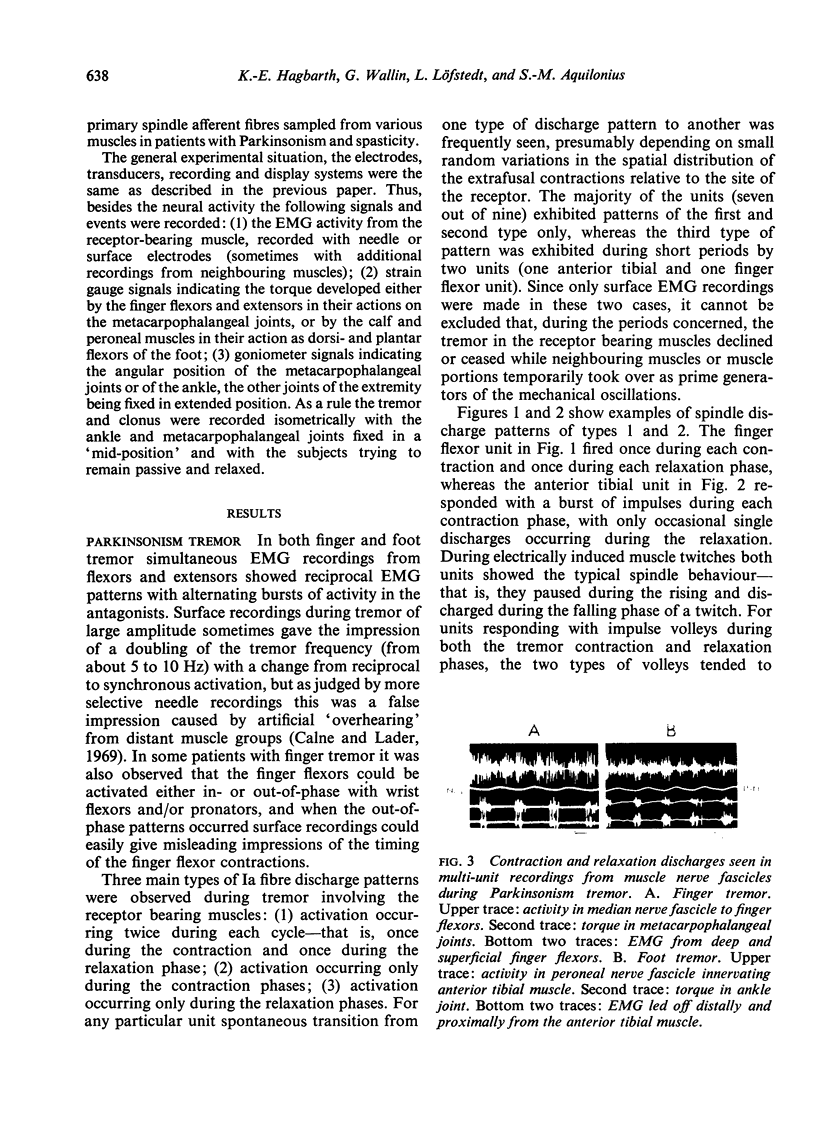
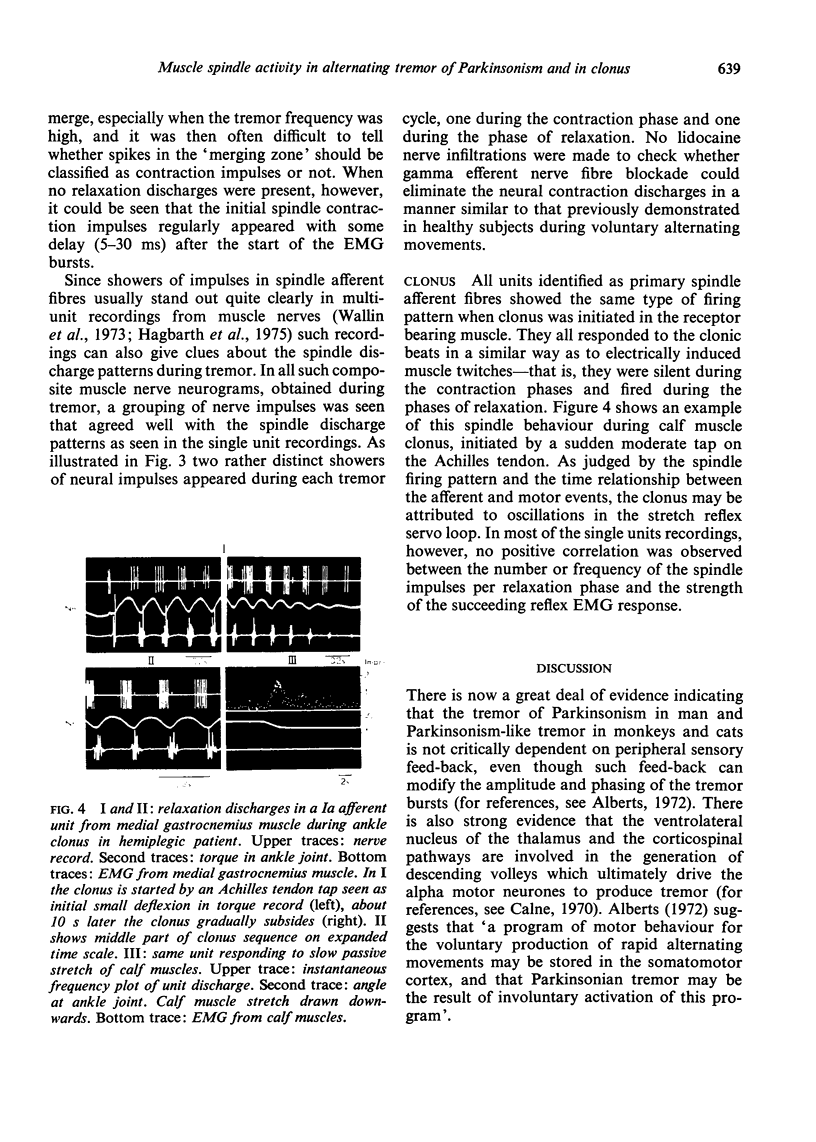
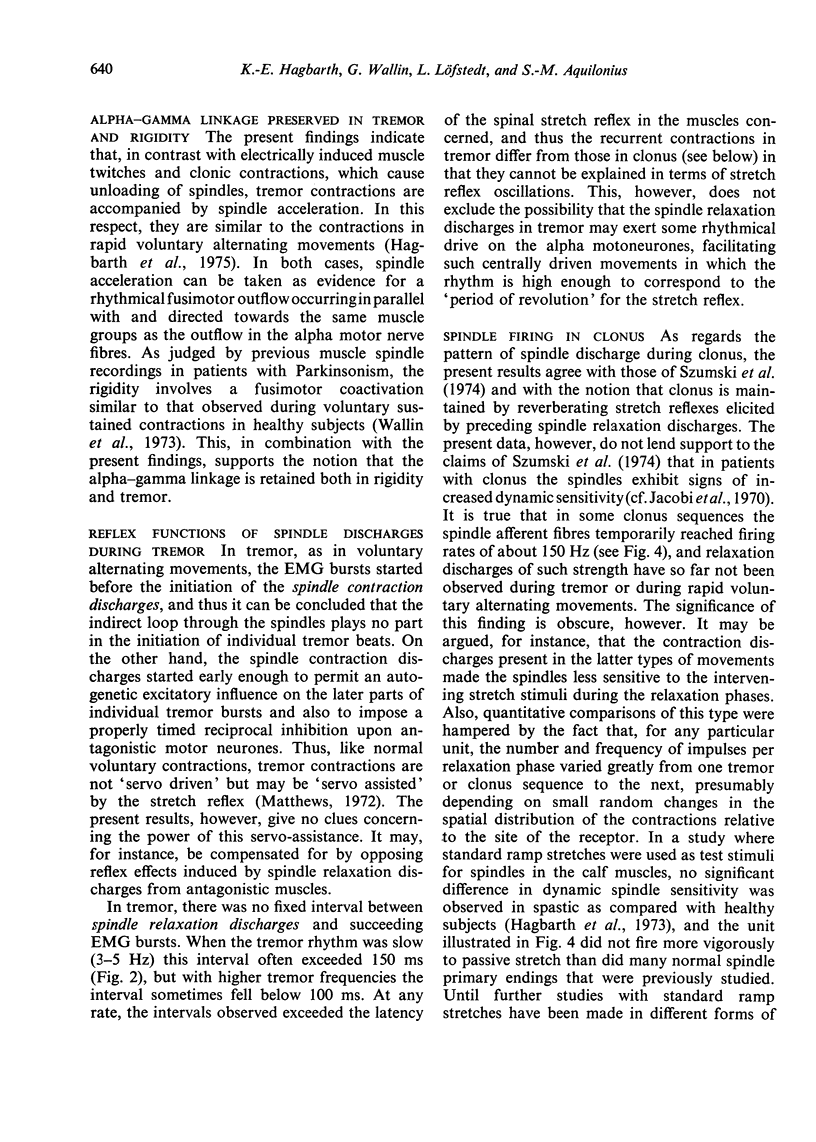
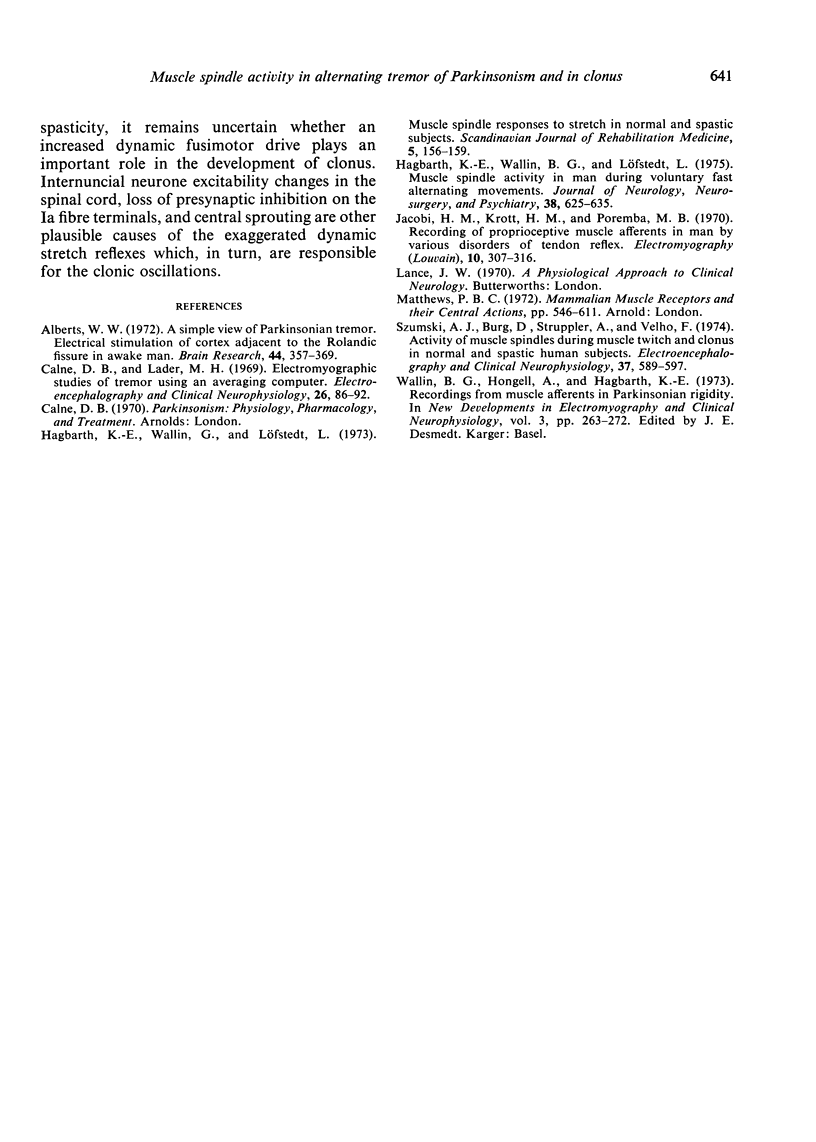
Images in this article
Selected References
These references are in PubMed. This may not be the complete list of references from this article.
- Alberts W. W. A simple view of Parkinsonian tremor. Electrical stimulation of cortex adjacent to the Rolandic fissure in awake man. Brain Res. 1972 Sep 29;44(2):357–369. doi: 10.1016/0006-8993(72)90308-3. [DOI] [PubMed] [Google Scholar]
- Calne D. B., Lader M. H. Electromyographic studies of tremor using an averaging computer. Electroencephalogr Clin Neurophysiol. 1969 Jan;26(1):86–92. doi: 10.1016/0013-4694(69)90037-6. [DOI] [PubMed] [Google Scholar]
- Hagbarth K. E., Wallen G., Löfstedt L. Muscle spindle activity in man during voluntary fast alternating movements. J Neurol Neurosurg Psychiatry. 1975 Jul;38(7):625–635. doi: 10.1136/jnnp.38.7.625. [DOI] [PMC free article] [PubMed] [Google Scholar]
- Hagbarth K. E., Wallin G., Löfstedt L. Muscle spindle responses to stretch in normal and spastic subjects. Scand J Rehabil Med. 1973;5(4):156–159. [PubMed] [Google Scholar]
- Jacobi H. M., Krott H. M., Poremba M. B. Recording of proprioceptive muscle afferents in man by various disorders of tendon reflex. Electromyography. 1970 Sep-Oct;10(3):307–316. [PubMed] [Google Scholar]
- Szumski A. J., Burg D., Struppler A., Velho F. Activity of muscle spindles during muscle twitch and clonus in normal and spastic human subjects. Electroencephalogr Clin Neurophysiol. 1974 Dec;37(6):589–597. doi: 10.1016/0013-4694(74)90072-8. [DOI] [PubMed] [Google Scholar]






